Lost in the Depths – Tantric Lingams from the Narmada River
PRIMITIVE - Friday, March 24, 2017By Misaki Imagawa
Edited by Glen Joffe
 |
|
Many of humankind’s earliest civilizations began on the banks of rivers, but it wasn't long before people learned to build dams to stem the threat of floods and droughts. The oldest known dam is located in Jordan and dates back to 3000 BCE. It’s evidence of humankind’s ability to harness and control the flow of rivers, which allowed villages to become cities; and ultimately, cities to become empires. Although the dangers of rivers was always present, no one can argue they were actually beneficial to people and the environment. Flood waters distributed enriching nutrients and sediment on land while dry seasons allowed people to explore the riches of exposed riverbeds. The obstruction of nature certainly comes with a price – not only with deadly catastrophes of failed dams but also the attendant loss of valuable culture and art that spread with the ebb and flow of rivers. For example, in India the annual dry season of the Narmada River was the only way to retrieve a particular object that has become one of the most meaningful and sought after collectibles in the world – Tantric lingams.
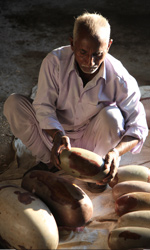 |
|
Authentic Tantric lingams can only be found in one place on Earth: the bottom of a twelve kilometer stretch of the thirteen hundred kilometer Narmada River in central India. The Narmada is one of seven holy rivers in India, including the Ganges, Yamuna, Godavari, Saraswati, Sindhu and Kaveri. Hindus believe that bathing in the Ganges can cleanse the soul, whereas just one look at the Narmada can have the same effect. According to Indian mythology, Lord Shiva – one of three deities known as the Hindu triad along with Brahma and Vishnu – once performed the cosmic dance to destroy an old, weary world to make way for a new creation, and the sweat from his body transformed into the Narmada. Narmada Ke Kanker Utte Sankar is a popular saying that means, "The pebble stones of the Narmada take on a personified form of Shiva." It is one way to describe Tantric lingams, which are also called Banalinga.
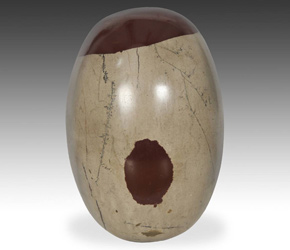 |
|
Unlike other forms of lingams that represent Lord Shiva, such as those carved from stone or cast in bronze, genuine Banalinga are formed in the currents of the Narmada. In fact, Banalinga are not rocks at all; they are gemstones composed of Chalcedony, technically cryptocrystalline quartz with iron oxide deposits and a density nearly equal to that of emeralds. Scholars believe that this unique composition was the result of a meteorite that crashed some 14 million years ago into the land now occupied by the Narmada, fusing its elements with those already found in the earth. The natural markings on the lingams, which are considered spiritually auspicious, are derived from these meteoric iron composites.
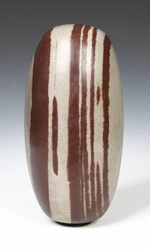 |
|
For many centuries Banalinga were considered objects of veneration for Tantrics, or learned sages. According to Tantric traditions, the lingam represented the unification of male and female energies; or expressed differently, as opposite energies united. In this regard, the body of the lingam represented male energy, characterized as knowledge; and the markings symbolized female energy, characterized as wisdom. You might say Tantric lingams illustrate the idea of harmony through duality; but they have more than symbolic value. Talented Tantric healers know how to cleanse and harness the Tantric lingam’s energy for the purposes of removing blockages in the human nervous system, cleansing the subtle bodies such as the human aura, and amplifying positive energy both within and around the human body. In short, the Tantric lingam is nothing less than a potent tool used to cleanse negativity and increase positivity to bring about an enlightened state.
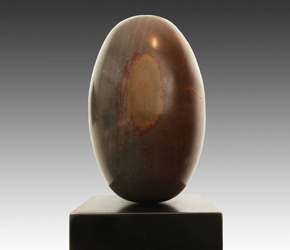 |
 |
||
A quick note about the word “Tantric,” which is Sanskrit meaning "to expand.” Technically, Tantra or Tantrism is not a religion, but instead, a form of religious practice composed of ritual, art, science and philosophy. It can be viewed as an overlay on top of Hinduism and Buddhism, which both have Tantric aspects. Elements of Tantra date back nearly 5,000 years and have been traced to the Indus Valley in present day India and Pakistan. The use of lingams in Tantric practice dates back nearly 4,000 years. Two aspects of Tantric philosophy should be noted: first, the union of opposite energies can create an enlightened state; and second, before one can become adept in spiritual matters they must first become adept in physical matters. The second aspect underscores the idea that Tantric lingams are actually energy objects capable of amplifying and absorbing energy in the physical world in a fashion similar to a quartz radio tuner.
Over many generations a small number of Brahmin villages along a very short stretch of the Narmada River have harvested lingams during the river’s dry season. Once a year when the once raging waters became calm and low, villagers ceremoniously gathered lingams from the shallow waters and shaped and hand-polished them to fully reveal their egg shape and natural markings. Tantric lingams vary in size from barely an inch to many feet in height. Generally speaking; the largest lingams are the rarest. Yet, their markings are also important features having an impact on value. Depending on their size and natural features, they can take as long as a year to polish and refine. Today, Tantric lingams are appreciated as much for their artistic value as their potent energy. This may be because of their universal egg shape, which appears both ancient and modern at the same time. This new found appreciation has resulted in a number of contemporary presentation methods; for example, on modern pedestal bases, utilizing them as fountains and in landscape arrangements, and even presenting them together as installations of varying sizes and arrangements.
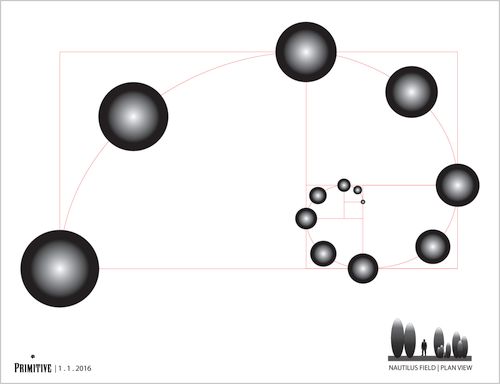 |
|
The tradition of harvesting and working with Tantric lingams is being severely threatened by a project aiming to build numerous dams along the Narmada River system. The concept of damming the over 815 mile long river for the sake of energy and agriculture was originally conceived back in the 1940s, but was delayed until 1979 due to strong opposition. In 2000, the Indian Supreme Court ruled in favor of starting construction. The original plan called for the construction of 30 large dams, 135 medium dams and as many as 3000 small dams along the river’s tributaries; in effect, turning the river into a series of interconnected lakes. The opposition to this development was based upon hundreds of thousands of people being uprooted and displaced along with the loss of their traditions, customs and culture.
The creation of dams along the Narmada River has quickly made authentic Tantric lingams “endangered objects.” The harvesting of Banalinga has already become close to impossible since for all practical purposes the river’s dry season is being systematically eliminated. The number of lingams being extracted has already dropped dramatically, and increasing rarity has caused their value and desirability to escalate all over the world. Soon they will be completely gone. Until the day when the Narmada overcomes man made obstacles and resumes its natural flow, the Tantric lingam will remain a meaningful and powerful object lost in the depths of Shiva's holy embrace.
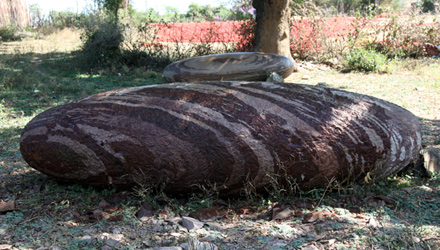 |
Download this Article: Lost in the Depths - Tantric Lingams.pdf